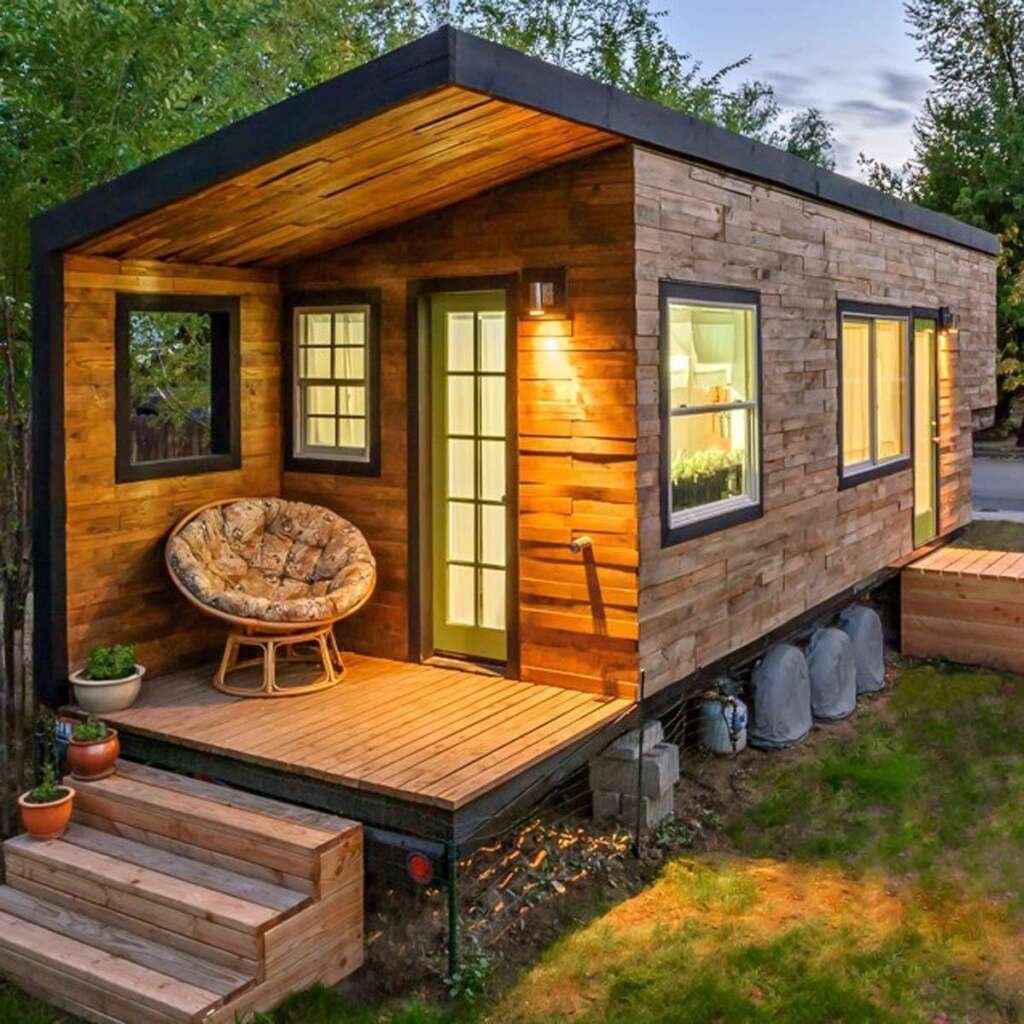Thinking of building your own tiny home? Wondering if it’s a realistic endeavor? In this article, we’ll explore the possibilities and challenges of building your own tiny home, offering insights and tips to help you navigate through the process. Whether you’re searching for financial freedom, a simpler lifestyle, or a creative project, we’ve got you covered. So roll up your sleeves and let’s get started on your tiny home journey.
Types of Tiny Homes
Mobile Tiny Homes
Mobile tiny homes are small dwellings that are built on trailers or wheels, allowing them to be easily transported from one location to another. These homes are typically less than 500 square feet and provide the flexibility to move whenever and wherever you desire. With their compact size and portability, mobile tiny homes are a popular choice for individuals who value a nomadic lifestyle or want the freedom to explore different places.
Stationary Tiny Homes
In contrast to mobile tiny homes, stationary tiny homes are permanently situated in one location. These homes are built on a foundation, just like traditional houses, and are not designed to be moved. Stationary tiny homes offer increased stability and can provide a sense of permanence, making them ideal for individuals who prefer a more settled lifestyle. Additionally, they often offer more space and design possibilities since there are no limitations imposed by having to make them mobile.
DIY Tiny Home Kits
For those who possess a do-it-yourself spirit, DIY tiny home kits are a fantastic option. These kits come with all the necessary materials, instructions, and pre-cut components to construct your own tiny home. DIY tiny home kits provide a sense of accomplishment and allow you to customize your dwelling according to your preferences. With the right tools and a little bit of patience, building a DIY tiny home can be a rewarding project that saves both time and money.
Legal Considerations
Zoning Regulations
Before embarking on your tiny home journey, it’s crucial to familiarize yourself with the zoning regulations in your area. Zoning regulations determine where and how tiny homes can be legally placed or built. Some areas have specific zoning ordinances that prohibit or restrict the construction of tiny homes, while others have embraced the tiny house movement and have designated zones for these dwellings. It’s essential to research and understand the zoning regulations in your locality to avoid potential legal issues down the line.
Building Codes
In addition to zoning regulations, building codes must also be considered when constructing a tiny home. Building codes are a set of standards and regulations that ensure the safety, quality, and structural integrity of residential buildings. These codes vary from region to region, so it’s essential to consult with your local building department to determine the specific requirements for your tiny home. Adhering to building codes not only keeps you in compliance with the law but also ensures that your tiny home is safe and built to withstand the test of time.
Permits and Licenses
Obtaining the necessary permits and licenses is a crucial step in the tiny home construction process. Depending on your location, you may need to acquire permits for various aspects of building your tiny home, such as foundation installation, electrical work, plumbing, and more. It’s essential to check with your local building department to understand the specific permits and licenses required for your project. Acquiring the appropriate permits promotes safety, legality, and peace of mind as you embark on this exciting endeavor.
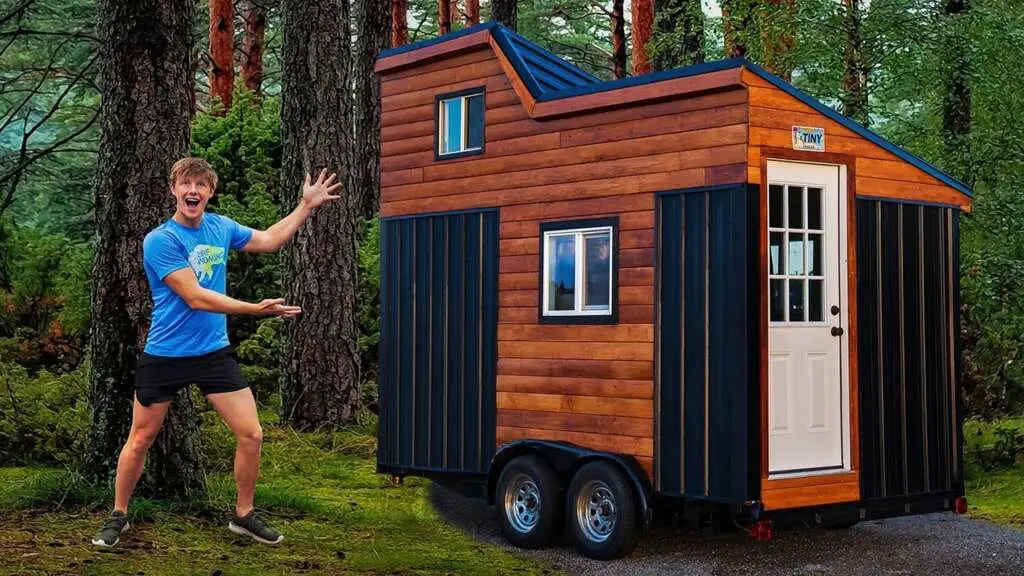
Design and Planning
Choosing the Right Design
When it comes to designing your tiny home, there are numerous factors to consider. The layout, architectural style, and overall design should align with your lifestyle and personal preferences. Are you looking for an open-concept design or defined rooms? Do you prefer a more rustic or contemporary aesthetic? Researching different design options and consulting with professionals can help you identify the perfect tiny home design for you.
Creating a Floorplan
Creating a well-thought-out floorplan is crucial in maximizing the functionality and livability of your tiny home. Every inch of space counts, so it’s essential to carefully assess your needs and prioritize the essential features. Consider factors such as the number of bedrooms, bathroom layout, kitchen size, and living area configuration. Sketching out your floorplan and making adjustments before construction begins can save time and ensure that your tiny home is tailored to your specific requirements.
Determining Your Budget
Before embarking on your tiny home project, determining your budget is essential. Tiny homes can vary significantly in price depending on factors such as size, design complexity, quality of materials, and level of customization. Consider all the expenses involved, including land acquisition, permits, materials, and labor costs if applicable. Having a clear understanding of your budget will help guide your decisions throughout the construction process and prevent any financial surprises along the way.
Finding Land
Renting Land
If you’re not ready to commit to purchasing land, renting a plot can be a viable option for setting up your tiny home. Many landowners allow tiny homes to be placed on their property for a monthly fee. However, it’s crucial to review the rental agreement carefully to ensure that the terms align with your needs and desires. Additionally, consider factors such as proximity to amenities, access to utilities, and any restrictions imposed by the landowner.
Buying Land
For those seeking a more permanent solution, buying land for your tiny home offers long-term stability and the freedom to personalize your living space. When purchasing land, consider factors such as location, local regulations, accessibility, and proximity to essential services. It’s advisable to work with a real estate agent who has experience in tiny home transactions to ensure that you find a suitable plot that meets your requirements.
Land Use Restrictions
Before settling on a particular piece of land, it’s essential to investigate any land use restrictions that may affect your ability to build and live in a tiny home. Some areas have covenants, conditions, and restrictions (CC&Rs) that impose specific limitations on dwellings, including minimum square footage requirements or architectural guidelines. Researching and understanding these restrictions beforehand will help you avoid potential issues in the future and ensure that your tiny home complies with all regulations.
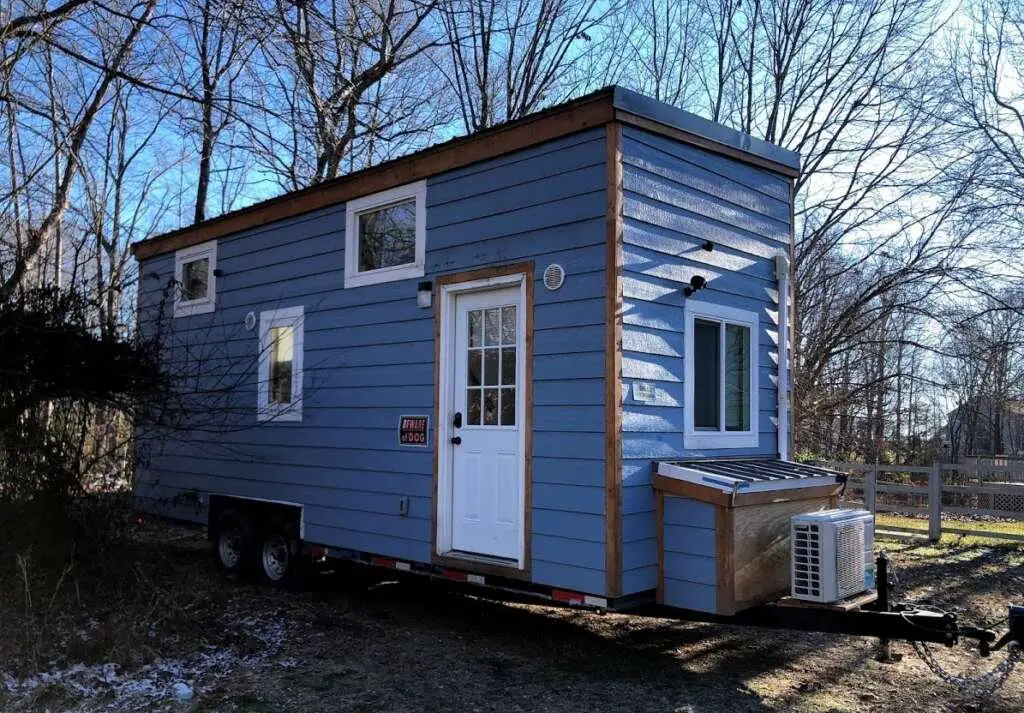
Tools and Materials
Essential Tools
Having the right tools is crucial for a successful tiny home construction project. A basic toolkit should include items such as a measuring tape, circular saw, drill, level, hammer, and a set of screwdrivers. Additionally, specialized tools like a miter saw, jigsaw, and angle finder may be necessary for more complex tasks. Investing in high-quality tools will not only make your construction process more efficient but also ensure accuracy and precision in your work.
Quality Building Materials
Using quality building materials is essential to ensure the longevity and structural integrity of your tiny home. From the foundation to the roof, every component should be chosen with care. Opt for materials that are durable, energy-efficient, and suitable for your local climate. Researching and comparing different options will help you make informed decisions and select materials that meet both your aesthetic and functional requirements.
Sourcing Recycled Materials
Sourcing recycled materials is an excellent way to reduce costs and environmental impact during your tiny home construction. Reclaimed wood, salvaged windows and doors, and repurposed fixtures can add character and uniqueness to your dwelling while benefiting the planet. Explore local salvage yards, online marketplaces, and even community forums to find reclaimed materials that fit your design vision. However, ensure that all recycled materials are in good condition and meet building code requirements to guarantee their safety and suitability for your project.
Construction Process
Foundation and Framing
The construction process of a tiny home typically starts with the foundation and framing. Depending on your design and local regulations, you may choose to use a trailer frame as your foundation or build a traditional concrete, wood, or steel foundation. Framing involves erecting the structural skeleton of your tiny home, including the walls, roof, and subfloor. It’s crucial to follow proper framing techniques and ensure that all connections are secure to guarantee the stability and safety of your tiny home.
Electrical and Plumbing
Once the foundation and framing are complete, it’s time to tackle the electrical and plumbing systems in your tiny home. Electrical work involves wiring your tiny home for lighting, outlets, and appliances while adhering to local electrical codes. Plumbing installation includes connecting water supply lines, installing drains, and setting up the wastewater disposal system. Due to the complexity of these systems, consulting with professionals or learning from reputable resources is highly advisable to ensure proper installation and functionality.
Insulation and Interior Finishes
Insulation plays a crucial role in maintaining a comfortable living environment and energy efficiency in your tiny home. Proper insulation minimizes temperature fluctuations, reduces noise, and enhances energy performance. Additionally, installing interior finishes such as drywall, flooring, and cabinetry can transform your tiny home into a cozy and functional space. Consider using materials that are lightweight, space-saving, and aesthetically pleasing to maximize the usability of your limited square footage.
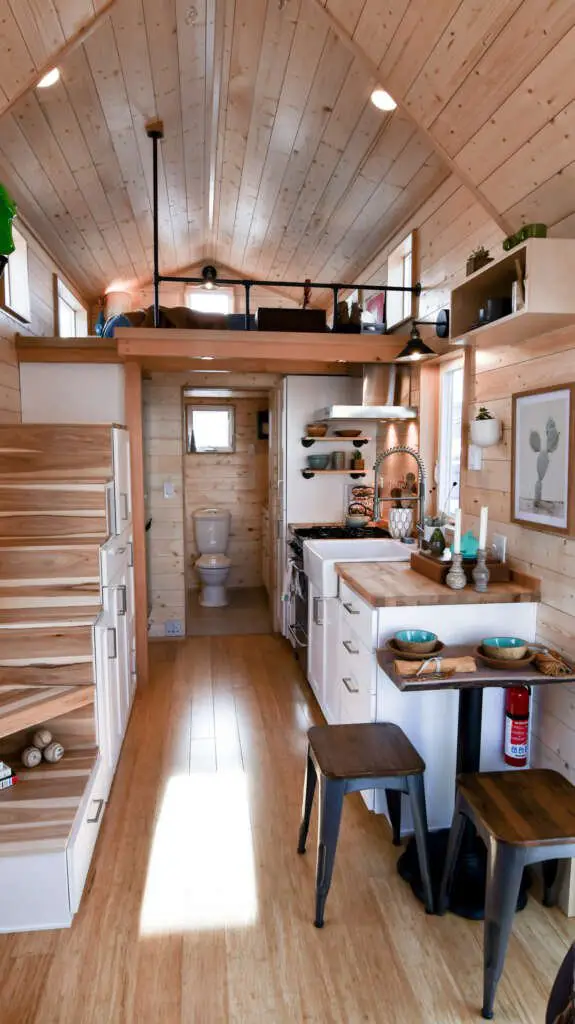
Building Codes and Safety
Understanding Building Codes
Comprehending and complying with building codes is of utmost importance to ensure the safety and legality of your tiny home. Building codes cover a wide range of aspects, including structural integrity, fire safety, electrical systems, and plumbing standards. It’s crucial to research and understand the specific building codes applicable to your region and consult with professionals if needed. By adhering to building codes, you can minimize the risk of accidents, ensure the well-being of occupants, and prevent potential legal issues.
Safety Measures
As with any other dwelling, safety should be a top priority in your tiny home. Install smoke detectors, carbon monoxide detectors, and fire extinguishers to safeguard against fire hazards. Adequate ventilation and properly functioning windows ensure optimal air quality and proper escape routes in case of emergencies. Additionally, consider factors such as slip-resistant flooring, sturdy handrails, and secure storage solutions to prevent accidents and promote overall safety within your tiny home.
Hiring Professionals for Certain Tasks
While building your own tiny home can be a rewarding and cost-effective endeavor, some tasks may require the expertise of professionals. Certain trades, such as electrical work, plumbing installation, and foundation construction, often require licensing and specialized knowledge. Hiring professionals for these specific tasks ensures that they are done correctly, compliant with regulations, and meet safety standards. It’s essential to assess your own skills and capabilities realistically and seek professional assistance when needed.
Utilities and Off-Grid Living
Water and Sewage Systems
There are various options for obtaining water and managing sewage in a tiny home. Depending on your preferences and situation, you can connect to municipal water and sewage systems if available, or install a well for water supply and a septic tank or composting toilet for wastewater disposal. Another alternative is utilizing rainwater harvesting systems and composting toilets for a more sustainable and off-grid living experience. Research local regulations and consult with professionals to determine the best solution for your specific needs.
Electricity and Alternative Energy Sources
Powering your tiny home efficiently and sustainably is a key consideration. Connecting to the local power grid is an option if available, but this may not align with the desire for a more independent lifestyle. Embracing alternative energy sources such as solar panels, wind turbines, or generators can provide you with autonomy and reduce your environmental impact. Careful planning and proper installation are necessary to ensure an adequate power supply to meet your daily needs.
Heating and Cooling Options
Maintaining a comfortable temperature within your tiny home is essential for year-round livability. Depending on your climate, various heating and cooling options can be considered. Electric or propane heaters, wood-burning stoves, or mini-split air conditioning units are some popular choices. Additionally, passive design strategies such as proper insulation, strategic window placement, and ventilation systems can help regulate the temperature naturally. Consider your climate, energy efficiency goals, and personal preferences when selecting the most suitable heating and cooling solutions for your tiny home.
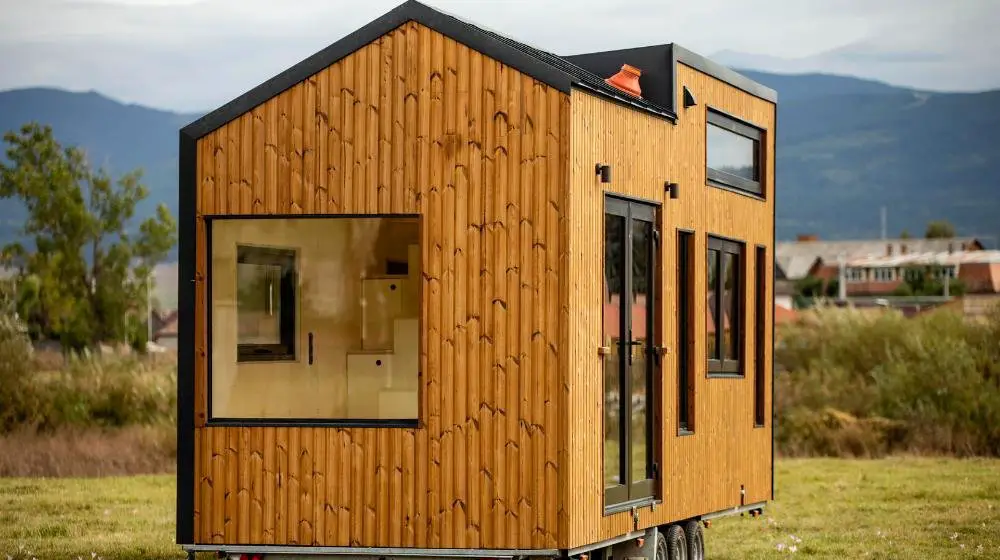
Interior Design and Functional Spaces
Maximizing Small Spaces
In a tiny home, every square foot counts. To make the most of your limited space, consider implementing creative design strategies. Utilize vertical space by incorporating tall storage units, lofted sleeping areas, or suspended shelving. Multi-functional furniture with built-in storage, such as beds with drawers underneath or coffee tables with hidden compartments, can help maximize functionality and reduce clutter. Additionally, embracing minimalism and decluttering regularly can help maintain a sense of spaciousness within your tiny home.
Storage Solutions
Smart storage solutions are essential for keeping your tiny home organized and clutter-free. Take advantage of under-counter storage, wall-mounted shelves, and hooks to utilize vertical space efficiently. Choose furniture pieces that offer hidden storage compartments, such as ottomans or benches with lift-up lids. Additionally, custom-built storage areas, such as staircases with built-in drawers or a custom closet system, can provide ample space for your belongings while adding character to your tiny home.
Choosing Multi-Purpose Furniture
Selecting multi-purpose furniture is a fantastic way to optimize functionality in your tiny home. Pieces that can serve multiple roles, such as a sofa bed or dining table with folding sides, allow you to adapt your living space to different needs throughout the day. Additionally, modular furniture that can be rearranged or expanded provides flexibility in accommodating guests or changing spatial requirements. When choosing furniture, prioritize pieces that are lightweight, compact, and multifunctional to make the most of your tiny home’s layout.
Maintenance and Longevity
Regular Maintenance Tasks
Like any other home, regular maintenance is necessary to ensure the longevity and optimal functioning of your tiny home. Some maintenance tasks include checking and sealing windows and doors, cleaning gutters, inspecting the roof, and maintaining plumbing and electrical systems. Regular inspections and addressing any issues promptly can help prevent costly repairs and ensure that your tiny home remains in excellent condition for years to come.
Extending the Lifespan of Your Tiny Home
Proper care and proactive measures can significantly extend the lifespan of your tiny home. Consider using weather-resistant and durable materials during construction and regularly inspect and address any signs of wear or deterioration. Implementing energy-efficient features and sustainable practices not only reduces environmental impact but also can result in long-term cost savings. By investing in quality construction and consistently maintaining your tiny home, you can enjoy its benefits for many years.
Addressing Potential Issues
While building a tiny home offers many advantages, it’s important to be aware of potential issues that may arise. Issues such as moisture buildup, inadequate insulation, or pests can affect the comfort and wellbeing of your tiny home. Regular inspections, prompt repairs, and addressing any issues as they arise are crucial in maintaining a functional and comfortable living environment. Be proactive in addressing potential issues and seek professional assistance when needed to ensure the longevity and enjoyment of your tiny home.
Building your own tiny home is an exciting and rewarding endeavor that offers immense freedom and creativity. By understanding the different types of tiny homes, considering the legal aspects, planning your design, and finding suitable land, you can embark on this journey with confidence. From choosing the right tools and materials to navigating the construction process, utilities, and interior design, this comprehensive guide equips you with the knowledge to create your dream tiny home. Embrace the minimalist lifestyle, maximize functionality, and experience the joys of living in a space that truly reflects your personality and values.
